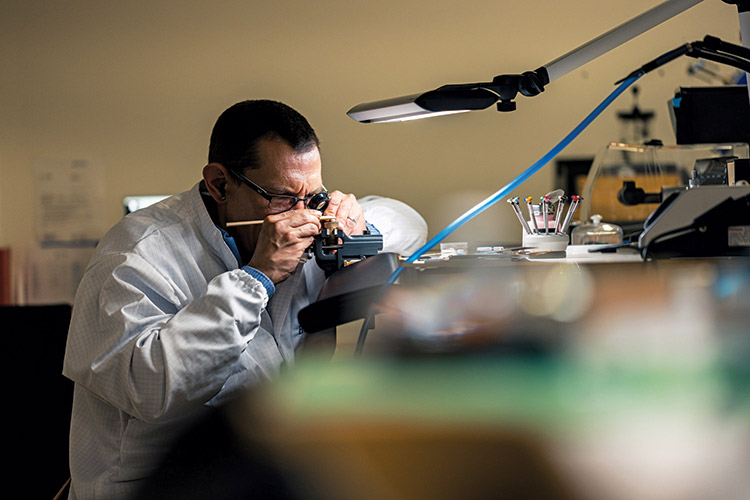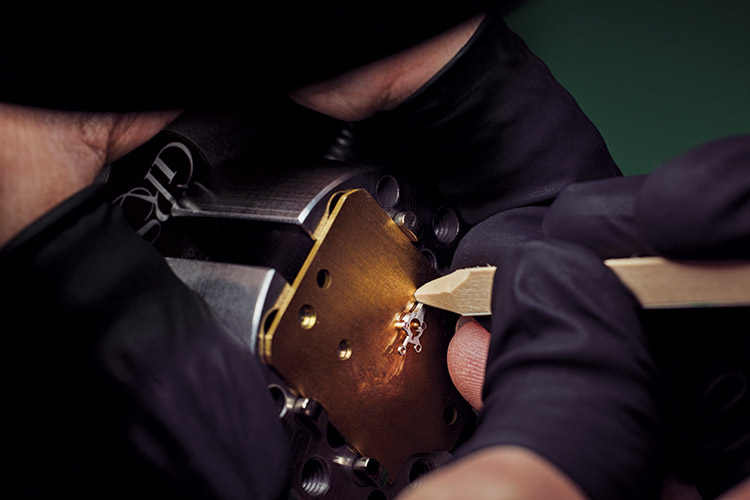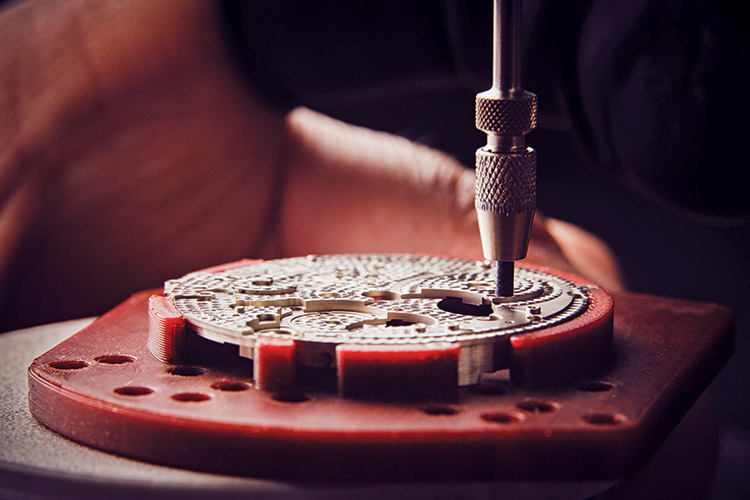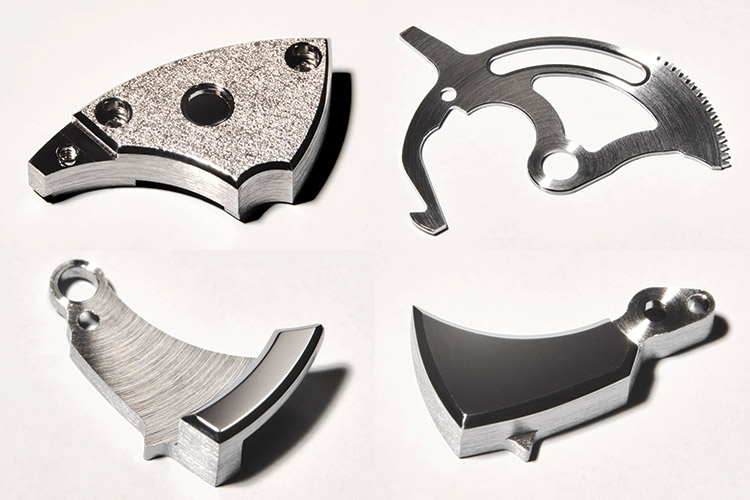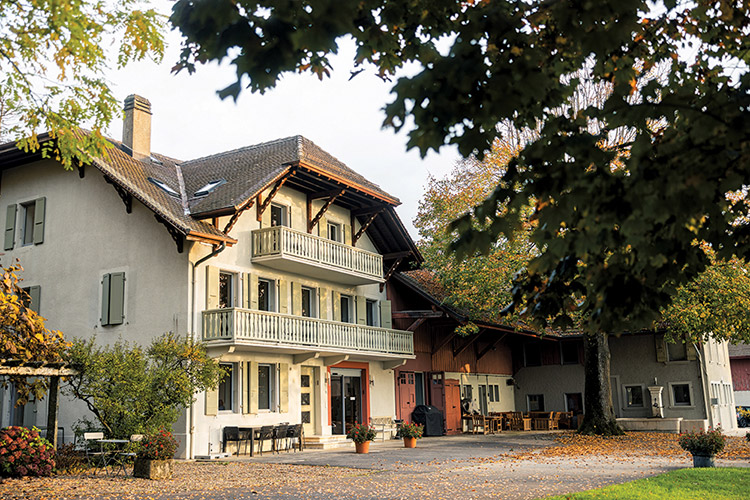
It is the careful attention to details – even those hidden from view – that elevates watchmaking from a craft to a true artistic endeavour. From its inception, haute horlogerie maison Biver has chosen an artistic approach, where technical prowess is emphasised and elevated by handcrafts, precious materials, and expert decoration. We take a deeper look at the process that turns the craft into an art
One of the things that makes watchmaking so special is that its fundamental technical requirements and aesthetic traditions can be interpreted and reinvented in truly infinite ways. There is no single way to create a watch, and we will never exhaust the skill and creativity that continue to push mechanical horology into the 21st century, stronger than ever before. What distinguishes one watch brand or watchmaker from the rest is its unique point of view, the approach it chooses to take, and the watches that flow from that perspective.
The maison
It was in 2023 that after 50 years at the highest echelons of the watchmaking business, Jean-Claude Biver decided to partner with his son Pierre Biver to embark on a magnificent new adventure together. The two passionate collectors launched Biver, a new kind of watch brand making timepieces that push the boundaries of watchmaking art and chart a vision for the future of what high-end Swiss watchmaking can be.
Liberated from the usual corporate constraints, they assembled a dream team of top specialists, each a master in their respective fields, to craft truly extraordinary timepieces without compromise. Central to this approach is the attention given to every detail and the decoration of every component, emphasising the watches’ handmade nature and artistic character. Stylistically, Biver watches are neoclassical, taking the best of Swiss watchmaking tradition and reimagining it for the 21st century.
Brand ethos
“The watch ‘industry’ has constantly tried to reduce and simplify decoration to a minimum,” says co-founder Jean-Claude Biver. “But there is not – and never will be – any watchmaking ‘art’ without decoration. It is a historical, essential, and fundamental part of the art of making watches.” From prominent components such as the case and dial to less obvious elements like individual gears and the undersides of bridges, each part of a Biver watch stands on its own as a small sculpture. But when assembled into something like the Carillon Tourbillon or the Automatique, these tiny marvels become greater than the sum of their parts, transforming the act of checking the time into a moment for pause and contemplation.
“Decoration can only be obtained through the pursuit of perfection,” continues Biver. “In the end, this is what contributes to the soul of watchmaking. Finishing brings a sense of eternity, perfection, and infinity to a watch, and it is what ultimately classifies it as art.”
Creations
The inaugural creation of the marque, the Carillon Tourbillon, features a tourbillon, minute repeater, and a micro-rotor, and holds a special place in their hearts. The duo is now excited to be laying the foundation for the future of the Biver brand with the introduction of the anything-but-basic Automatique.
Many of the techniques employed by Biver are traditional in their roots – anglage, perlage, and the like – but fresh in their execution. Frosted and mirror-polished surfaces contrast with one another for greater visual impact, while clearly defined and sculpted angles lend an architectural feel to their calibres. Read on for further details on some of the techniques that make each Biver watch a work of art.
Anglage (Polishing of edges, also known as bevelling)
Carefully executed by hand with the help of metal- and wood-polishing tools, the flat edges of each gold plate and bridge are shaped into tight, brightly polished bevels. Interior angles, where lines come together, present the craftspeople with the greatest challenge, and offer a platform to showcase their skills, as no machine can produce similar results in these tight, precise spaces.
Mirror Polishing (Blocage poli miroir)
Also sometimes called black polishing, this technique renders a surface so cleanly polished that, when looked at from certain angles, it appears black, no matter the colour of the base material. This is an extremely laborious process that can only be done by hand and requires the use of multiple abrasive tools and compounds to slowly work the surface from its rough state to its final, perfect form. The effect is equally dramatic, whether applied to a single screw, a minute repeater’s hammers, or a concave bezel.
Circular Graining (Perlage)
A traditional watchmaking decoration, perlage is a series of overlapping circular marks applied to a flat surface, such as the underside of a bridge or movement plate. This is done by hand, one circle at a time, with the help of a small hand press. A single component might contain hundreds of individual “pearls,” and one small mistake means the whole process must start over from scratch. This can be seen underneath the micro-rotor of the JCB.001, though there are many other components bearing perlage hidden underneath the brand’s watch dials.
Circular Satin Finish (Cerclage / Satinage circulaire)
Whether a component is gold, platinum, or stainless steel, it is Biver’s house style to leave no surface untreated. One way to add visual interest to a larger element is to employ circular graining, during which an abrasive surface is used in a circular motion, leaving behind a pattern reminiscent of the rings on a tree. It brings out the metal’s natural character while adding a bit of contrast at the same time.
Straight Satin Finishing (Traits tirés)
This is similar to circular graining but with the finish executed in straight lines rather than circular ones. This can be done to varying levels of depth, with light satin finishes lending a subtle texture and deeper satin finishes offering a richer tactile quality. Either way, this decoration elongates visual lines, adding dynamism to elements like case lugs and tourbillon bridges. It is especially impactful when employed in combination with mirror polishing to create moments of contrast and surprise.
“Drawing” (Etirage)
Flank smoothing with cabron is a highly meticulous watchmaking decoration technique. It involves rubbing the flanks of a component with a cabron, a small abrasive stone or specialised tool, to achieve a perfectly smooth and satin-like surface. This process requires exceptional precision and craftsmanship, enhancing the aesthetics and finishing of high-end watches.

